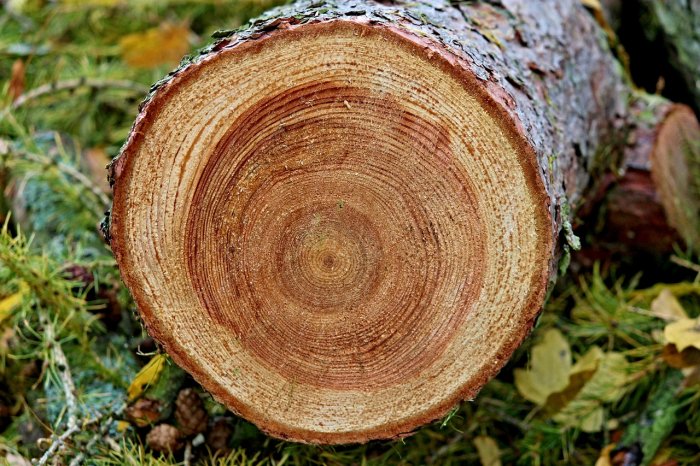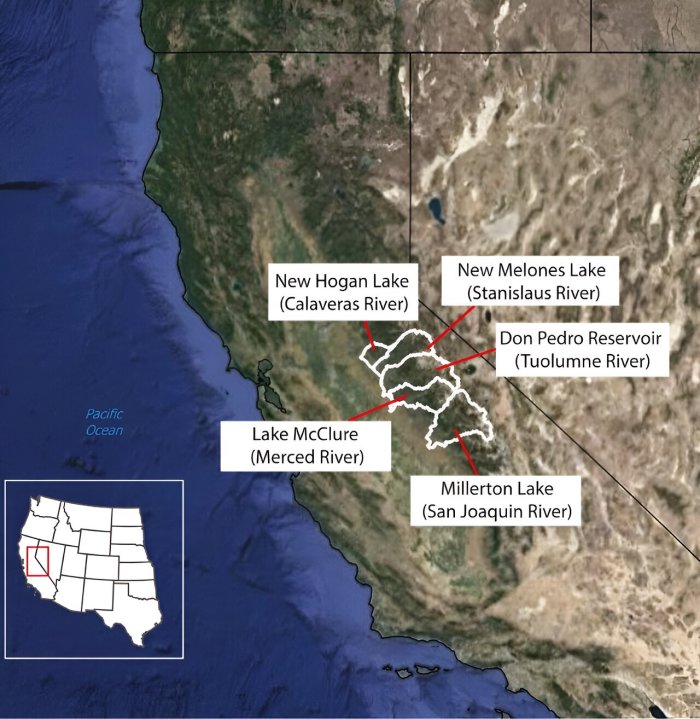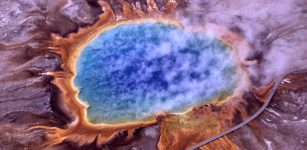600 Rears’ Worth Of Tree Rings From The San Joaquin Valley Reveal Climate Risks
Eddie Gonzales Jr. – MessageToEagle.com – An interdisciplinary collaboration used 600 years’ worth of tree rings from the San Joaquin Valley to reconstruct plausible daily records of weather and streamflow scenarios during that period. Modeling based on those scenarios revealed the region has experienced vast variability in climate extremes, with droughts and floods that were more severe and lasted longer than what has been seen in the modern record.
Credit: Pixabay – Public Domain
This new approach, combining paleo information with synthetic weather generation, may help policymakers and scientists better understand—and plan for—California’s flood and drought risks and how they will be compounded by climate change.
The group’s paper, “Understanding Contributions of Paleo-Informed Natural Variability and Climate Changes on Hydroclimate Extremes in the San Joaquin Valley of California,” published in Earth’s Future. The lead author is doctoral student Rohini Gupta.
The San Joaquin Valley sits in the southern part of California’s Central Valley, a major agricultural hub from which much of the nation gets its produce. Over the last few years, the region has seen a wild swing between severe drought and significant atmospheric rivers, which makes the valley a bellwether for the climate hazards that are facing the rest of California and much of the world, according to Patrick Reed, the Joseph C. Ford Professor of Engineering in Cornell Engineering, and co-senior author of the paper.
“If we think of it as a translatable example, not everything is exactly identical, but the type of Mediterranean climate, snow-dominated dynamics, the mix of urban, agricultural and environmental flows are all representative of global challenges and specifically of California’s challenges,” Reed said. “California is making major institutional and infrastructure investments and thinking about where their water supply vulnerabilities are.”
The project brings together the Reed Research Group’s expertise in water resources planning with the tree-ring analysis and statistical capabilities of co-senior author Scott Steinschneider, associate professor of biological and environmental engineering in the College of Agriculture and Life Sciences.
“We really wanted to bring the strengths of our two groups together to create a very robust methodological and application-based contribution that would allow us to take diverse datasets that we have for the region and make them actually usable for modern day water systems planning and management,” said Gupta, who developed the method for reconstructing dominant California weather patterns in a previous paper.
The researchers’ weather reconstruction was informed by a 600-year-old tree-ring-based dataset that overlaps much of the western U.S., including five subbasins within the San Joaquin Valley: the Tuolumne River, the Merced River, the San Joaquin River, the Stanislaus River and the Calaveras River. After the scenarios were created, the team embedded them with anthropogenic climate changes in the form of temperature trends and precipitation scaling.
The resulting models show how flood and drought extremes have evolved within the San Joaquin Valley and can help clarify how natural variability and climate change can compound each other’s effects.
The study area is comprised of five subbasins within the greater San Joaquin River basin. Temperature and precipitation are developed for gridded locations across the watersheds (listed in parenthesis) and streamflow is developed at the outlet of the reservoirs. Credit: Earth’s Future (2023). DOI: 10.1029/2023EF003909
“Folks typically want to separate out internal variability versus climate change, just to get a sense of the signal change with anthropogenic warming,” Reed said. “But when we’re planning in complex water systems, both are occurring. And we need a sense of what happens when they come together. And what happens is we get extremes we’ve never seen. This opens the envelope of plausible futures in a much wider sense.”
Among the findings:
- A large portion of variability in flood and drought extremes in the San Joaquin Valley can be attributed to natural variability in the short term, but human-driven climate changes are influential at durations longer than 30 years.
- The last 600 years have seen sustained pluvial and drought periods that have lasted decades.
- Estimates of drought occurrence and severity from the last 30 years rival the worst megadrought period in the 600-year reconstruction, but estimates of modern drought duration have been slightly shorter than what is found in the paleo record. Therefore, relying solely on the modern instrumental record can underrepresent hydroclimatic hazards.
- The combination of natural variability and climate change can lead to more frequent, more severe and longer flood and drought extremes than have ever been experienced over the last 600 years.
“I think this is the start of a new conversation, in some sense, of really operationalizing these kinds of information,” Reed said. “It’s a really nice bridge between the paleo community’s amazing datasets, and then linking to all the excellent scientific advances that are going on with earth system modeling and climate change. I feel like we’re bridging the operational planning communities and important scientific communities to all bring our tools to bear.”
Written by Eddie Gonzales Jr. – MessageToEagle.com Staff Writer












